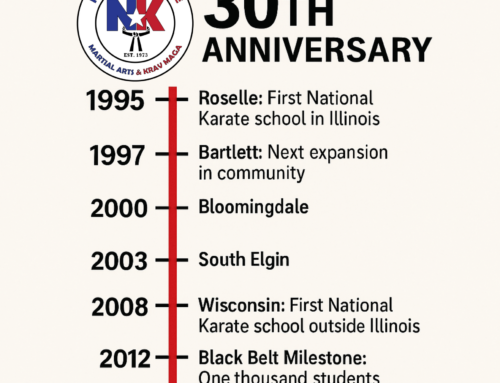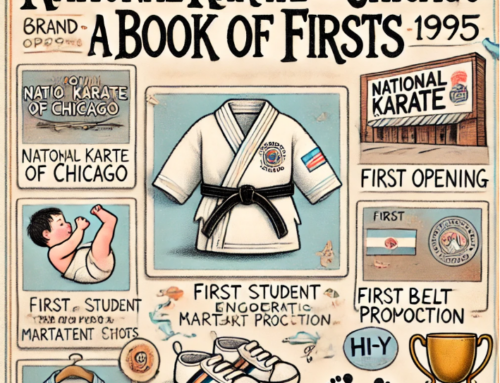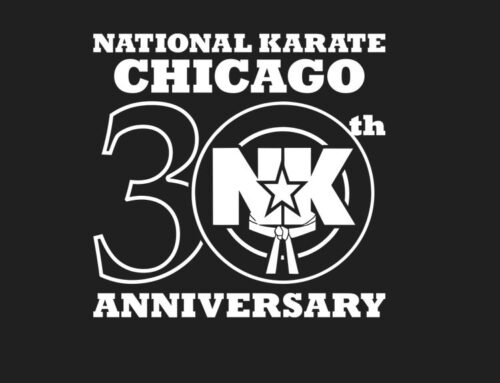With the passing of Mohammad Ali this week it reminded me of the connection he had with the martial arts world and the 3 degrees of separation between Ali and the National Karate Schools.
“The Greatest”
Muhammad Ali was widely regarded as one of the most significant and celebrated sporting figures of the 20th century who changed the world of boxing and modern sports promotion. You could make a good argument that his self-proclamation of “I am the greatest!” was a true statement in the boxing world.
Tae Kwon Do Training
What many do not know about Ali is that he was an innovator that was always trying to find ways to improve his boxing skills. In 1976 he sought out Grand Master Jhoon Rhee to train in Tae Kwon Do in order to give himself an edge over other boxers.
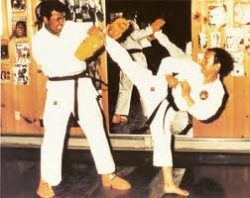
“Father of American Tae Kwon Do” & National Karate
Jhoon Rhee is known as the “Father of American Tae Kwon Do” because he is the first person to bring Tae Kwon Do from Korea to the United States. Jhoon Rhee is also the “roots” of the National Karate Family Tree because the founders of NK, John Worley and Larry Carnahan earned their Black Belts from Jhoon Rhee. They also worked with Master Rhee and managed his karate schools in Washington D.C. in the late 60’s and early 70’s. Read more about Jhoon Rhee and National Karate’s history.
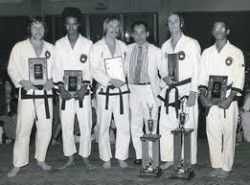
Master Rhee with John Worley (Center) and his D.C. Instructors
Of course, back then, martial artists were well known as small men being able to knock out much larger opponents and breaking boards and bricks because of their ability to maximize their strength with speed and focus. Imagine what a large man could do with that knowledge.
Here is what Muhammad Ali said about his training with Jhoon Rhee, “Mr. Rhee taught me the Tae Kwon Do “Accu-Punch”; it is so fast, you can hardly see it!” Another punch he learned from Master Rhee was the Tae Kwon Do “backfist”, which is similar to a boxers jab, but thrown from a different angle with a snap as if you were snapping a towel. It was extremely effective for Ali because it came from a different angle than boxers were used to seeing from regular jabs. If you watch youtube videos of Ali, you can see him back pedaling and surprising his opponents with the backfist. He was so fast and strong that he was even able to knock out opponents with this technique.
Wikipedia writes this about him. “Ali had a highly unorthodox boxing style for a heavyweight, epitomized by his catchphrase ‘float like a butterfly, sting like a bee’. Ali relied on his superior hand speed, superb reflexes and constant movement, dancing and circling opponents for most of the fight, holding his hands low and lashing out with a quick, cutting left jab (or Backfist) that he threw from unpredictable angles.
Using a synchronizer, Jimmy Jacobs, who co-managed Mike Tyson, measured Ali’s punching speed versus Sugar Ray Robinson, a welter/middleweight, often considered the best pound-for-pound fighter in history. Ali was 25% faster than Robinson, even though Ali was 45–50 pounds heavier. Ali’s punches produced approximately 1,000 pounds of force. ‘No matter what his opponents heard about him, they didn’t realize how fast he was until they got in the ring with him’, Jacobs said.” (Wikipedia)
In his final years he courageously battled Parkinson’s disease without complaining or seeking pity. Ironically this disease made him eerily quiet which was so opposite his flamboyant persona that made him famous.
Ali will be missed by the boxing world and by a generation of fans who had the pleasure of watching one of the greatest “float like a butterfly and sting like a bee”. And the martial arts world will take solace in the fact that perhaps our art gave Ali a slight boost to his sting.
To Read More Blog Posts from Cristian Nelson and the National Karate Schools of Chicago click here

